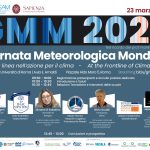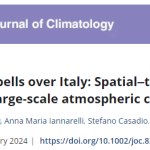The Boundary layer Air Quality-analysis Using Network of Instruments (BAQUNIN) is one of the first observatories in the world to involve several passive and active ground-based instruments installed in multiple locations, managed by different research institutions. The instruments operating in synergy, offer quantitative and qualitative information for a wide range of atmospheric parameters for atmospheric chemistry (satellite) validation activities and Planetary Boundary Layer (PBL) studies. Since 2015, the supersite has promoted by the European Space Agency (ESA) and starting from 2023 also supported by European Organisation for the Exploitation of Meteorological Satellites (EUMETSAT).
BAQUNIN supersite is located Rome (Italy) area which represents one of the most densely populated areas in Europe with a population of about 4.3 million citizens including the metropolitan area.
The surrounding region is characterized by complex orography (). The city stretches along the Tiber valley and is surrounded by the mountain chain of the Apennines to the north and by the Alban hills to the south. To the west, the surface slope gently decreases until reaching the coast of the Tyrrhenian Sea, about 27 km away from the city centre. In its current configuration, the BAQUNIN supersite consists of three observation sites selected in the urban (APL), semirural (CNR-ISAC), and rural (CNR-IIA) environments (NB1), where BAQUNIN additional instrumentation reinforces the already existing observatory for meteorological and atmospheric composition studies.BAQUNIN includes ground-based active and passive remote sensing and surface instruments, which allow the retrieval of fundamental parameters for the investigation of atmospheric properties, gases, and atmospheric aerosols. Most of the devices are currently installed in APL, a dual spectrometer system Pandora-2S is installed each site. In support to the observational activities, the BAQUNIN consortium produces dedicated numerical simulations of the relevant meteorological fields by means of the WRF Model.
The advantageous location of its three stations, and the contemporary presence of several diverse instruments for atmospheric observation, have fostered the insertion of BAQUNIN in several national and international remote sensing networks, for which it now represents a certified cross-point. These networks are:
- Pandonia Global Network (PGN; pandonia-global-network.org)
- SKYNET/European Skynet Radiometers (ESR; euroskyrad.net/)
- Aerosol Robotic Network (AERONET; https://aeronet.gsfc.nasa.gov/)
- European Brewer Network (EUBREWNET) (eubrewnet.org/)
- Climate Network (OMD; https://fondazioneomd.it/climate-network)
- Sardegna Clima (SCO; sardegna-clima.it/)
Since the BAQUNIN suite of products is produced by a variety of instruments and processing chains, some differences in the native data formats may occur. A substantial effort is put into the harmonization of all BAQUNIN data (naming conventions, and physical units of the observed parameters, metadata) and conversion of native datasets into netCDF file format following the GEOMS standards for atmospheric products. These final products are disseminated through the BAQUNIN website and the ESA Atmospheric Validation Data Center (EVDC; https://evdc.esa.int).
The main research activities currently carried out at BAQUNIN are:
- physical interpretation of data collected by numerous remote sensing instruments, operating in synergy, to obtain information about air quality
- investigation of meteorological processes occurring in the Planetary Boundary Layer
- micro- and local-scale analyses of atmospheric dynamic phenomena
- study of the effects of medium- and long-range aerosol transport on the atmospheric composition and the physical/optical aerosols properties
- design and development of LIDAR systems and algorithms for the investigation of aerosols and water vapour
- algorithms development for retrieval of additional products not foreseen by the software supplied with the instruments
- intercomparison site for remote sensing instruments belonging to national and international networks
- satellite cal/val activities in urban, semirural, and rural environments.
In addition to the above research activities, the BAQUNIN consortium actively participates in the design and organization of measurement campaigns in collaboration with several international and national research institutes.
BAQUNIN encourages researchers to participate in projects, field campaigns, and collaborations or to propose new lines of research. Furthermore, the APL site can host instruments belonging to other national and international research entities for intensive measurement campaigns or for long-term studies.
BAQUNIN supersite has been promoted by the European Space Agency (ESA) to establish an experimental research infrastructure for the validation of present and future satellite atmospheric products and the in-depth investigation of the planetary and urban boundary layers, to improve the understanding of urban meteorology driving pollutant dispersion and long-range transport phenomena. The BAQUNIN precursor activities started in 2015 in the framework of the Instrument Data quality Evaluation and Analysis Service (IDEAS+) contract and continued with the BAQUNIN project from March 2019 onward.
Since 2019, the BAQUNIN supersite has been supported by the ESA “IDEAS-QA4EO” frame contract, specifically through Work Packages dedicated to:
- Night-time ground-based observation for aerosol and/or trace gases retrievals
- Improved ground-based aerosol retrievals using NO2 real time correction
- AOTF-based NO2 camera for urban pollution imaging
- UAV-based observations for BRDF estimation
- Ground-based network for satellite cloud mask validation
In the above-mentioned small projects, BAQUNIN plays an essential role by maintaining and operating the scientific instrumental suite, organizing collocation campaigns, and participating in the scientific activities.
The BAQUNIN supersite and its team is part of a consortium, awarding an EUMETSAT contract entitled “Scientific Service for Fiducial Reference Measurements for Copernicus Aerosol Product Cal/Val Activities”. Thus, EUMETSAT is now officially contributing to the BAQUNIN project.
In the Supersite are present in situ and ground based remote sensing instruments, operating in synergy :























